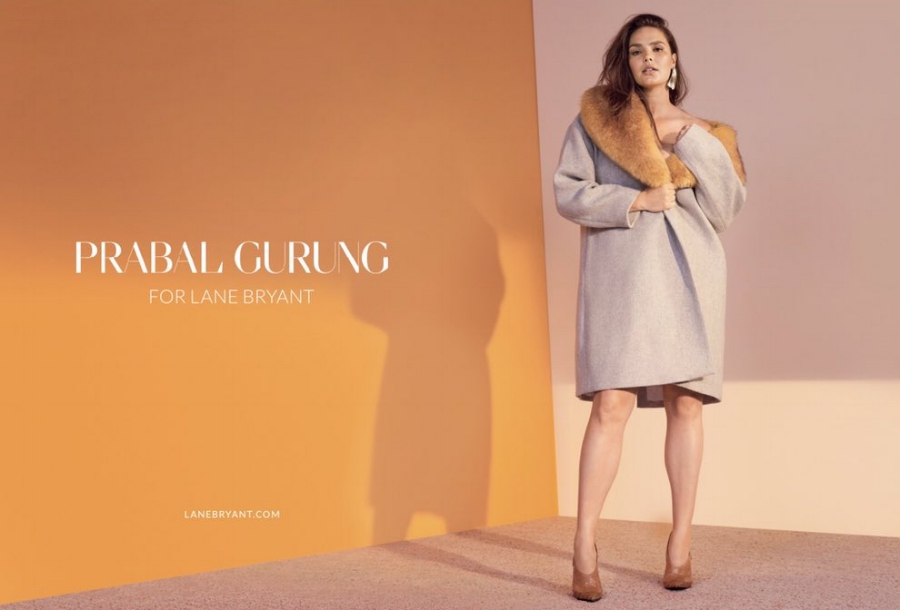
image: Lane Bryant
“Retailers have a plus-size problem,” Bloomberg wrote last year. This remains true. While no shortage of brands, particularly traditional retailers, are struggling to boost sales “as shoppers spend more of their money on electronics and experiences, rather than on garments,” more often than not, these same retailers are opting to overlook a critical segment of the population: The $20 billion market that is comprised of women who wear size 12 and above.
The statics in this area are striking: Almost half the women in the U.S. are size 12 or larger. As market research company NPD has revealed, the plus-size apparel market accounted for $20.4 billion in sales in 2016, up from $17.4 billion in 2013. London-based consultancy, McKinsey & Co., echoed the rising demand, stating that the number of mentions of “plus size” in the fashion press tripled in 2016 compared with the previous year. And in case that is not indication enough, by 2020, revenue in the category is expected to hit $24 billion.
Yet, based on the offerings being put forth by the majority of retailers, you would likely be surprised to know that such a demand exists. On its website, Nike offers nearly 800 different garments that run between size XS and XL. Of the garments that are offered in sizes 1X to 3X, there are roughly 50. (Note, that is up from the mere “5 items on its website in plus sizes” that Bloomberg recorded last year).
The Gap offers 88 different garments in “plus” sizes – aka sizes that run up to 18 – on its website. Spanish fast fashion giant, Zara, does not offer any plus size-specific options at all.
As for brick-and-mortar stores, they are tend to be worse, per Bloomberg, “commonly relegating plus-size clothing to faraway corners of their stores and stock clothes designed to cover women up, rather than give them the bold, bright, fashion-forward styles they offer elsewhere.”
This is not to say that some brands and retailers are not making strides. Plus-size retailer Lane Bryant, for instance, introduced a collaboration with Prabal Gurung recently – complete with advertisements in Vogue – that appears to actually provide beautiful, wearable clothing for women in a wider range of sizes. The collection is striking, in part, because it very visibly represents more than a retailer throwing together some sub-par garments in an effort to check the “plus-size” box.
Eloquii – which has raised $21 million to fuel its growth since December 2014, an ode to the appeal of its “high-quality, on-trend apparel” for sizes 14 through 24 – and plus-size rental services, including Gwynnie Bee, have been well-received by consumers and the press. And do not overlook bloggers Gabi Gregg and Nicolette Mason, who launched their own collection, Premme, this summer after experiencing dissatisfaction with what was being offered.
There is, nonetheless, a significant disconnect for many of the market’s most mainstream brands.
Why is it that retailers are simply opting out of this segment, which is not only being demanded by ever-increasingly sophisticated consumers but is also proving capable of producing significant profitability? Well, according to Gadfly, “the apparent disconnect between what retailers offer and what customers need stems partly from an old, enduring stigma in the fashion industry, which has seen plus-sizes as denigrating to a brand.” Moreover, “retailers often consider plus-size an ancillary business, meaning they lack understanding of and dedication to the category.”
“It’s a vicious cycle for retailers,” according to Mariah Chase, CEO of plus-size retailer Eloquii, “which makes them scared to step into the water.” Chase told CNBC that 65 percent of American woman are considered plus-size, but the category represents only about 17 percent to 18 percent of apparel sales.
Regardless of the reasons, one thing is clear, retailers can no longer afford to continue to treat plus-size fashion as an afterthought. As Prabal Gurung puts it, “For the longest time, ‘plus-size’ was put on the back burner.” And now? “The needle is shifting in the right direction.”







